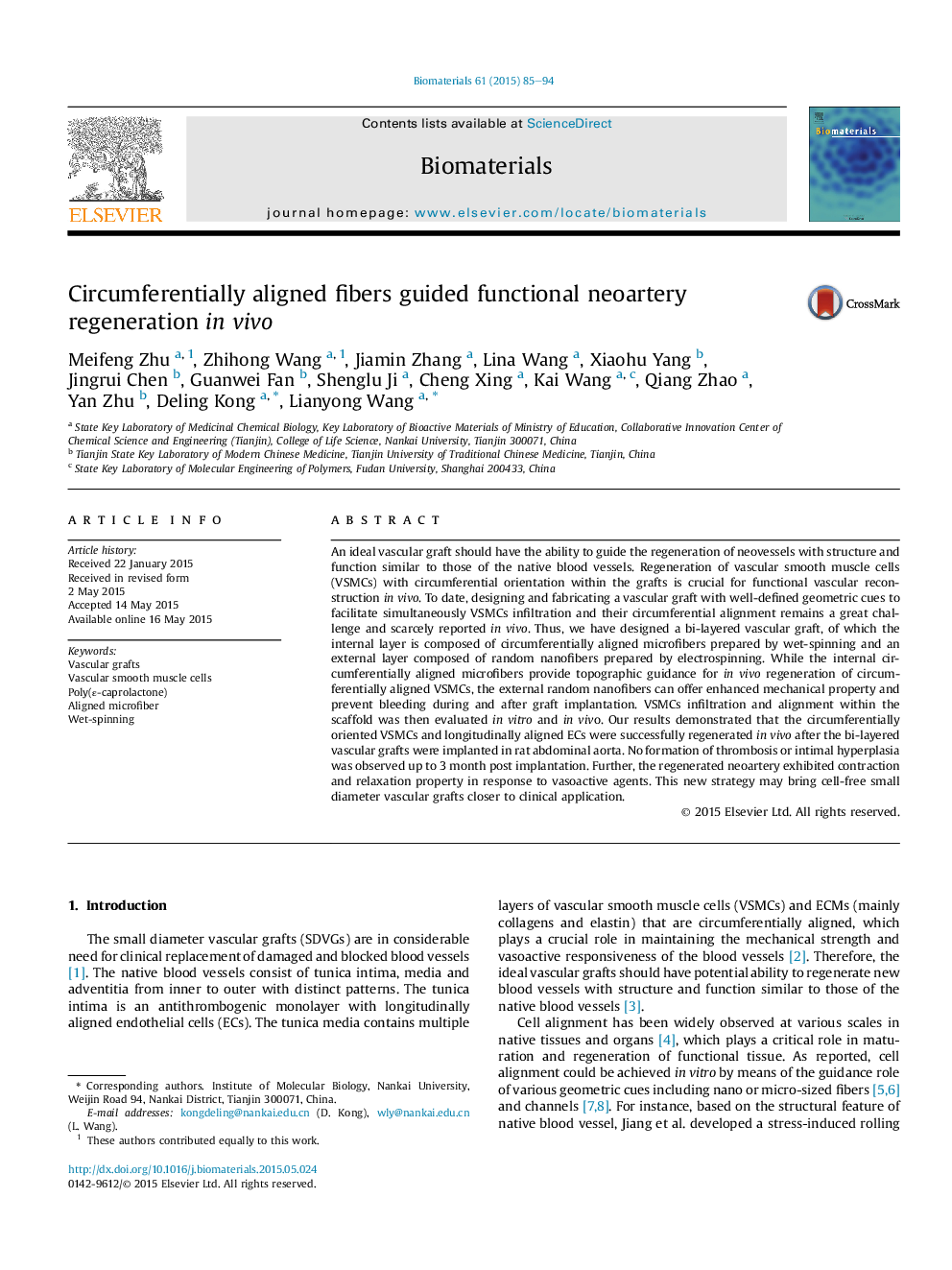| Article ID | Journal | Published Year | Pages | File Type |
|---|---|---|---|---|
| 6485570 | Biomaterials | 2015 | 10 Pages |
Abstract
An ideal vascular graft should have the ability to guide the regeneration of neovessels with structure and function similar to those of the native blood vessels. Regeneration of vascular smooth muscle cells (VSMCs) with circumferential orientation within the grafts is crucial for functional vascular reconstruction in vivo. To date, designing and fabricating a vascular graft with well-defined geometric cues to facilitate simultaneously VSMCs infiltration and their circumferential alignment remains a great challenge and scarcely reported in vivo. Thus, we have designed a bi-layered vascular graft, of which the internal layer is composed of circumferentially aligned microfibers prepared by wet-spinning and an external layer composed of random nanofibers prepared by electrospinning. While the internal circumferentially aligned microfibers provide topographic guidance for in vivo regeneration of circumferentially aligned VSMCs, the external random nanofibers can offer enhanced mechanical property and prevent bleeding during and after graft implantation. VSMCs infiltration and alignment within the scaffold was then evaluated in vitro and in vivo. Our results demonstrated that the circumferentially oriented VSMCs and longitudinally aligned ECs were successfully regenerated in vivo after the bi-layered vascular grafts were implanted in rat abdominal aorta. No formation of thrombosis or intimal hyperplasia was observed up to 3 month post implantation. Further, the regenerated neoartery exhibited contraction and relaxation property in response to vasoactive agents. This new strategy may bring cell-free small diameter vascular grafts closer to clinical application.
Related Topics
Physical Sciences and Engineering
Chemical Engineering
Bioengineering
Authors
Meifeng Zhu, Zhihong Wang, Jiamin Zhang, Lina Wang, Xiaohu Yang, Jingrui Chen, Guanwei Fan, Shenglu Ji, Cheng Xing, Kai Wang, Qiang Zhao, Yan Zhu, Deling Kong, Lianyong Wang,
